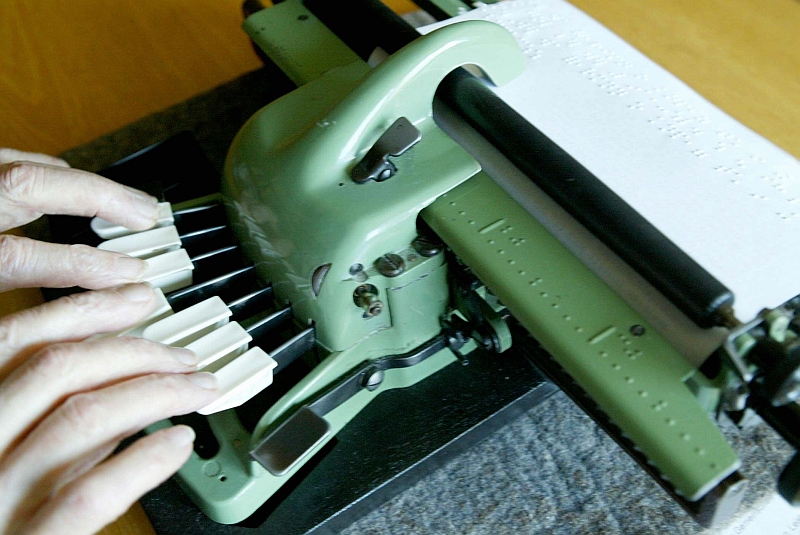Content Middle
Main Content
.Homage to Louis Braille
Dr. Hans-Eugen Schulze
Justice Dr. Schulze Rtd., German Federal Court of Appeals
Homage to Louis Braille
04/01/1809 to 06/01/1852:
My journey through life with his script
In April 1928 - when I was six years old - I sat in the 1st grade of the blind school at Soest. A metal slate lay before me with words written in braille. I learned to read and write the braille script there.

"German braille contractions" were introduced in 1932. Stenography and braille music , and later codes for mathematics and chemistry as well as contractions for French and English Braille were introduced in 1936.
Starting from 1936 - schooling then consisted of only eight years - I was trained in Soest for three years in stenography, telephone operating and recaning. The latter helped me after 1961, when I worked as an advisor to Christoffel Blindenmission with regard to vocational training in developing countries. Everything thus has a purpose in life, although we may not recognize it immediately and sometimes never. My blindness also had a purpose, as I have indicated at the beginning of my homepage.
In 1939 I was employed at the regional court in Dortmund. I took dictations on a shorthand machine, where text is written on small strips of paper. I then typed out the entire text in full on a typewriter. Since the judgements that were dictated to me primarily consisted of facts, which originated from the current hearing, I was confident that I would be able to draft them myself, and studied law. With the help of braille books, I began preparing for the entrance exam of the Carl-Strehl school of German Blindenstudienanstalt. It is still incomprehensible to me as to how it was possible for me to quit my job at the regional court on 31.01.1944, as there existed a huge shortage of manpower at the end of the second world war. In April of this year, I moved to Marburg and completed college in 1945.
Thereafter I taught braille to the newly blinded war veterans. From January 1946 when the university resumed its operations again, I studied law and political economy. I wrote down the lectures, if essential, on the shorthand machine, and later converted them into full text. This small machine also helped me during all my exams.
I however wrote in braille all my assignments during my course, both the public exams, my dissertation and later all my judgements when working as a judge. I also collected all the preparatory material in braille. This often amounted to several pages when working at the federal Supreme Court.
I also wrote most of the material that is currently on my homepage, as well as numerous articles in "Horus" and other magazines for the blind in braille.
I used the shorthand machine at the provincial court in order to take down statements of affected parties and witnesses. I also used the machine again during retirement in order to take down minutes at board meetings of the evangelical association of blind and partially sighted in Baden-Württemberg as well as in the senior circle of my community.
I no longer read German books and magazines - except for "Geistig fit" - in braille, but rather listen to them. I however still read magazines in English contracted braille from India and South Africa and a few exercises from an English grammar book for advanced learners in braille, in order to keep myself mentally active. Starting next year, I plan to refresh my knowledge of Latin, which would serve the same purpose.
While in bed, when exercising, while at mass or when travelling, I often recollect some task that has to be completed. I therefore always keep a braille slate handy, in my case a postcard-sized slate and a stylus. The slate consists of a base plate with indented holes, each with six slots, which make up the Braille dots. Paper is placed in it and the lid with six "cells" is clamped on it. A metal pencil-like device called the stylus is then used to punch dots into the cells. The stylus is held in the palm with the index finger gripping it.
Since I write shorthand, I am able to use the slate and stylus with great speed. Braille is written in inverted form from right to left, and is thereafter read from left to right with fingers.
I had a memorable experience in 1954. Two years earlier, to mark the occasion of his 100th death anniversary, The remains of Louis Braille was entombed in a pantheon. My wife and I searched for it and spent a few minutes in front of the well-protected alcove where his sarcophagus lies.
